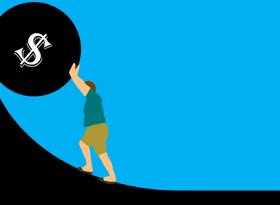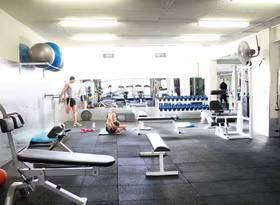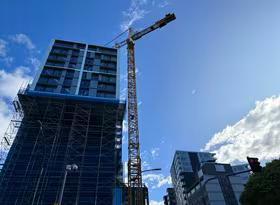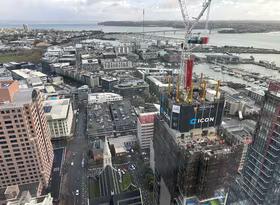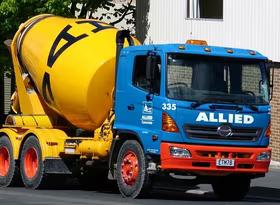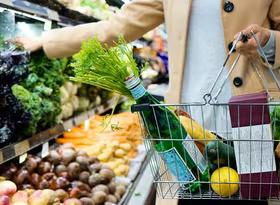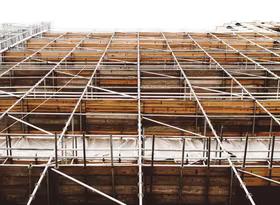Well, that escalated quickly!
The figures contained in this article represent our best guesses at how the economic effects of the COVID-19 pandemic might unfold over the next 1-2 years given the information and knowledge we currently have. The figures do not represent fully modelled economic projections, but we are attempting to provide our best partial insights into the outlook as it currently stands. Medical, political, and economic events have been changing rapidly over the last few weeks, no one is entirely sure of the full implications, and our current view could be out of date very quickly. We continue to assess the economic effects daily. Our regular forecasts will be published on April 17.
In late January, just two months ago, we were finalising our most recent set of forecasts. We looked at the coronavirus problems appearing in China and pondered whether we should adjust our tourism projections. We decided that it was too late in the forecast process to change the figures, especially given that we had no idea how significant the effects would be. It seems naïve now but, at the very worst, we were anticipating something similar to SARS in 2003.
As recently as two weeks ago on Thursday 12 March, I was presenting at an Infrastructure NZ event in Auckland and commented that Infometrics was anticipating GDP growth of about 1% for New Zealand in 2020, down from a projection of 2.5% in our January forecasts. On Friday 13 March, the stock market was routed as the US implemented bans on European arrivals. By Saturday 14 March, the government had virtually shut the borders, and by Monday 16 March the Reserve Bank had slashed the OCR by 75 basis points. On Tuesday 17 March, the government announced a $12b economic support package, before a full-scale lockdown of the country was announced on Monday 23 March.
As the COVID-19 pandemic spread, we rapidly re-evaluated our economic expectations. Chart 1 shows the evolution of our thinking about GDP growth over the last couple of weeks, alongside our January forecast track, and Treasury’s illustrative view of economic activity published on 17 March. The most obvious point from this chart is that the current economic environment is incredibly fluid and fast-moving.
Although the Global Financial Crisis (GFC) also led to rapid revisions in economic forecasts, the changes at that time were largely “market-driven” – the result of the collective decision-making of businesses and households to alter their behaviour. In that situation, there can be a whole range of individual responses leading to the aggregate outcome. The most extreme outcomes tend to be moderated by the fact that not everyone makes identical choices or behaves the same way. In contrast, the current situation has seen government decision-making (rightly) forcing all individuals to take extreme action.
For example, tourism hasn’t been left to muddle its way through the COVID-19 crisis. If that was the case some people would cancel travel, some would delay or scale back their travel plans, and other people would continue on as if nothing was amiss. Instead, all tourism in New Zealand has been stopped – an outcome mandated by the government that would not otherwise have occurred.
Similarly, as we enter the lockdown at Level 4 restrictions, business production and household consumption are being collectively restrained by the government’s powers. Consequently, the current shock to the New Zealand economy is unprecedented in its combined speed and severity.
Our current thinking is that GDP could contract by 3.1% between the December 2019 and March 2020 quarters, with a further 5.6% contraction between the March and June 2020 quarters.
The March figure is based on our estimate of a 0.4% contraction in economic activity prior to the lockdown being announced. This result is primarily driven by the hit that was already being taken by the tourism sector. Selected commodity exports, particularly to China, have also been weaker than usual. Additionally, these shocks will have started to negatively affect broader business and consumer confidence.
We have then estimated that the economy can only operate at about 65% capacity under lockdown conditions, once essential services and those people who are able to work from home are considered. This reduced productive capacity over the coming week equates to a further 2.7% reduction in output over the March quarter.
The June quarter will have three weeks of lockdown (at a minimum), meaning that output will be about 8.1% below “normal”. With March quarter output already about 3% below normal, this result implies a further decline of about 5% in activity on a quarterly basis. What about the other 0.6 percentage points of contraction in the quarter? Think of that as an allowance for just a bit more negative stuff taking place.
The next question we need to attempt to answer is how quickly the economy might recover, and to what degree. If the lockdown is successful in stopping COVID-19 in New Zealand and everybody can simply go back to their jobs in four weeks’ time, we could expect the contraction in the first half of the year to be quickly recovered in the second half of 2020.
But such an expectation is patently ridiculous. We know that tens of thousands of tourism, retail, and hospitality jobs will not be recovered. The borders will remain closed for at least six months, with some restrictions likely to last for much longer. Many other countries will have larger and longer outbreaks of COVID-19 than New Zealand, and we will not want to start importing new cases again. Significantly reduced airline capacity will also hinder tourism’s recovery.
Outside of these sectors, there will be other businesses that are forced to reduce staff numbers or do not survive the downturn, even with the government’s assistance package.
There is also the non-trivial risk that the lockdown needs to be extended beyond four weeks, or that some restrictions need to be reimplemented by the government at future dates to prevent further flare-ups of COVID-19. We have not explicitly included these outcomes in our projections. However, in recognition that it is unlikely to be a smooth path back to full health, we have adopted a conservative growth track up until the September 2021 quarter, with growth holding below 1% per quarter.
The potential challenges posed by these public health measures are the biggest risk to the economy we see over the next 1-2 years. Apart from these challenges, we are most concerned about potential flow-on effects of the direct job losses caused by the tourism shutdown. These losses will lead to a reduction in household spending and business investment that results in other job losses and business failures.
It is possible, but so far unlikely, that the sharpness and magnitude of the current economic shock creates so much business and consumer fear that the decline in aggregate demand becomes self-reinforcing. The Great Depression in the 1930s is a prime example of the economy entering a decline from which it could not recover in any timely manner.
Chart 2 shows the GDP levels (rather than growth rates) implied by a growth track similar to the Great Depression alongside our current central scenario. We note that quarterly GDP figures from the 1930s are not available for New Zealand, but it is likely that the immediate severity of the current shock is greater than the initial hit to the economy back in 1930.
We are hopeful that the New Zealand economy will avoid a worst-case scenario similar to the Great Depression. Firstly, the government’s response in 2020 is already completely different to what occurred in 1930. Ninety years ago, the economic downturn mean that the government cut spending to try and prevent its fiscal deficit from ballooning out of control. This reaction simply exacerbated the downturn in economic activity. In contrast, the government has already announced significant support initiatives for the economy, and there is sure to be a lot more money spent in coming months. Just yesterday, Parliament authorised $52b in imprest supply spending to support the economy if required, a massive figure equivalent to 17% of GDP.
Secondly, New Zealand’s position as a food exporter to China places us in good stead. The initial outbreak of COVID-19 made us look overexposed to China as an export market. However, China’s success in bringing the virus under control suggests that its domestic demand conditions will be able to return towards normal much more quickly than in the likes of Europe, the US, or possibly Australia.
In the current global environment, China’s economy will grow at a slower pace than previously due to the lack of aggregate demand and constraints on economic activity in other parts of the world. Demand for Chinese manufactured products will be relatively limited for several months. Consequently, there will be soft demand for inputs into the manufacturing process. Hard commodity prices are likely to be weak, implying tough times for Australian exporters.
However, if the Chinese domestic economy is functioning relatively normally, its people will still need to eat. For many of our exporters, including dairy, meat, seafood, and horticulture, market conditions and prices are still likely to be reasonably good. This type of external stimulus is precisely the sort of thing we need to start our economy back on an upward trajectory. Even with export prices declining from previous highs, the significant depreciation of the NZ dollar will support our export revenue in coming months.
We have had several clients ask about the implications of recent events for the housing market and construction activity. We have not yet started preparing the building numbers for our next set of forecasts to be published on April 17. Bearing that standpoint in mind, here are our current high-level thoughts.
House prices could fall 5-10% over the next 12-18 months. In the near term, there will be little activity taking place with few buyers or sellers in the market. The government’s mortgage holiday scheme, in partnership with the retail banks, will alleviate some of the downward pressure on the market over the next six months. Nevertheless, there will still be some people who are forced to sell their house for reasons such as a relationship break-up or a change in job location. The real pressure on the market will emerge in late 2020 or into 2021 as job losses mount and the mortgage holiday scheme presumably is wound down. For those that lose their jobs, a mortgage holiday is likely to only delay the inevitable.
Residential construction and consent issuance will effectively halt during the lockdown. Even if consent issuance continues with council staff working from home, we would expect an equivalent drop-off in subsequent weeks as the pipeline of new projects being submitted for consent by architects and developers dries up due to the lockdown. Once the immediate effects of the lockdown have been worked through, we could envisage the deterioration in the housing market and broader economic environment kneecapping new development activity. A 25%pa drop in consent numbers over the second half of 2020 would see the annual consent total for the calendar year sitting at between 29,500 and 31,000 new dwellings.
Following the GFC, the biggest decline in the annual volume of private sector non-residential building consents was 29% between May 2009 and May 2010. We were already forecasting an 8.1% drop in private sector consents over the year to March 2021. However, a 29% drop in private sector work by this time next year would see the annual consent total (including public sector consents) fall from about $7.5b currently to $6.2b. Accommodation, retail, and commercial buildings are likely to be most heavily affected.
Infrastructure is set to continue as the leading light of the wider construction sector, with a healthy pipeline of work and the backing of public sector funding. Additional work might also be commissioned by the government to support employment and help the economy’s recovery phase to get underway.
Our forecasts will remain in a state of flux as conditions rapidly shift. We will continue to reassess the outlook as the economic effects of the COVID-19 pandemic and associated political decisions change. The pandemic is first and foremost a health crisis, and our forecasts reflect how we expect the economy to perform under current settings, rather than attempting to influence how those settings are decided upon. To all those in lockdown with us, stay strong.
